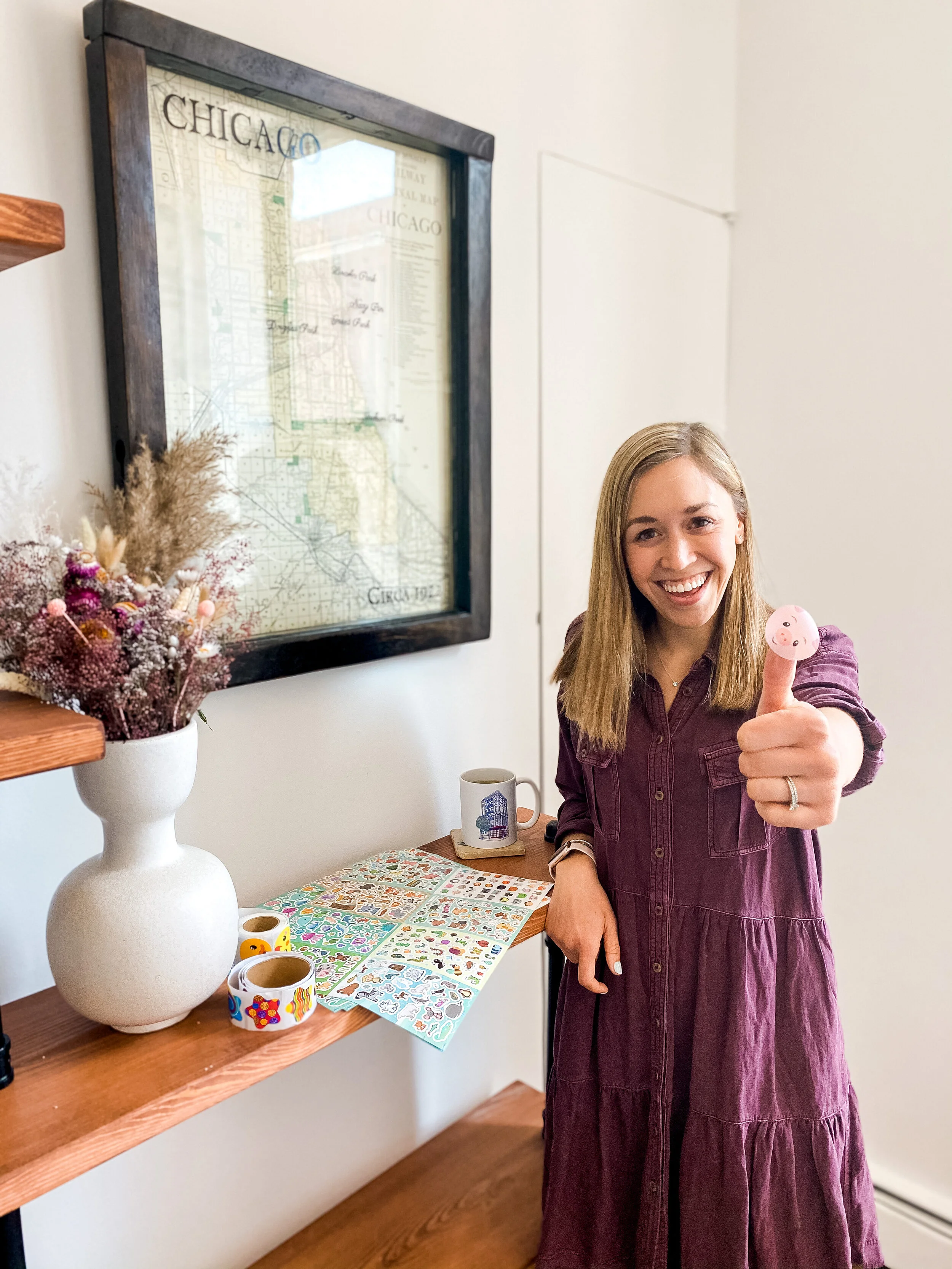How can stickers support speech and language development?
When it comes to planning therapy sessions, you don’t need to reinvent the wheel. One of my most effective therapy materials are stickers. I’ve been on a big sticker kick lately for kids of all ages! Stickers are motivating, cost effective, require minimal clean-up, and are adaptable to the age and language level of each kiddo.
Below, I’ve listed a few ways I use stickers in therapy:
Modeling simple phrases:
For children with receptive and expressive language delays, stickers provide a way to model simple 2- to 3-word phrases (e.g., “Get it,” “Pull it off”), simple verbs (e.g., “Peel,” “Help,” “Stick”), adjectives (e.g., “Big,” “Little”), and pronouns (e.g., “I wonder if you should put it or if I should…”).
Following directions:
I love addressing goals related to following directions when kids are motivated and therefore, stickers are the perfect activity to work on following simple 1-step directions (e.g., “Peel sticker,” “Put the sticker on page”), 1-step directions incorporating spatial concepts (e.g., “Put the cow under the puppy”), 2-step related direction (e.g., “Peel off the sticker and put it on the page”), and 2-step directions incorporating temporal concepts (e.g., “Put the pig on before you put the duck on.”).
Modeling core vocabulary:
With emerging augmentative and alternative communication (AAC) users, stickers are an effective way of modeling core vocabulary for varied communicative functions, such as directing actions (e.g., “Put on,” “Go,” “Get,” “That”), requesting (e.g., “Want more”), commenting (e.g., “Like it”), and asking for assistance (e.g., “Help”).
Making choices
Use stickers as an opportunity to provide kids with choices. Kids can choose between stickers using so many different communication modalities, such as eye gaze (i.e., looking towards a sticker), gestures (e.g., reaching, pointing, etc.), words or phrases, signs, and/or AAC use.
Token reinforcement
For kids that benefit from a token reinforcement system (e.g., token board, “first, then” contingencies), stickers encourage participation in assessment and therapeutic tasks. I always bring stickers to my evaluations, as kids often become distracted when attending to structured picture pointing tasks for extended periods of time. Stickers serve as a great motivator!
Describing objects & language organization
Many kiddos with an expressive language delay/disorder will request a sticker that is out of reach using non-specific vocabulary (e.g., “This one,” “That one”) rather than listing salient features of the sticker they want (e.g., pattern, shape, etc.). Stickers provide a natural opportunity for children to make more specific requests using an organized description. For kiddos that benefit from visuals, I may even incorporate a graphic organizer to assist with language organization.
Articulation
When kids are working on a specific sound, I use stickers that frequently incorporate that sound (e.g., star and smiley face stickers for /s/ blends). This provides a kiddo with frequent opportunities to practice the sound in naturally occurring contexts during a therapy session.
Barrier games
Barrier games are one of my favorite ways to address descriptive language skills, understanding and using spatial concepts, perspective taking, and following directions. During a barrier game with stickers, I ask a kiddo to create a picture using a small number of stickers. We set up a barrier (e.g., game box) between us such that I’m not able to see their picture scene. I then ask them to describe their sticker creation as I attempt to make a replica based on their description. When they are finished describing their picture scene, we compare their picture to mine before switching roles.
Since transitioning to teletherapy, I’ve also been using many of the online Disney sticker books. I’ve listed a few of my favorites below:
What are your favorite ways to use stickers in therapy?



